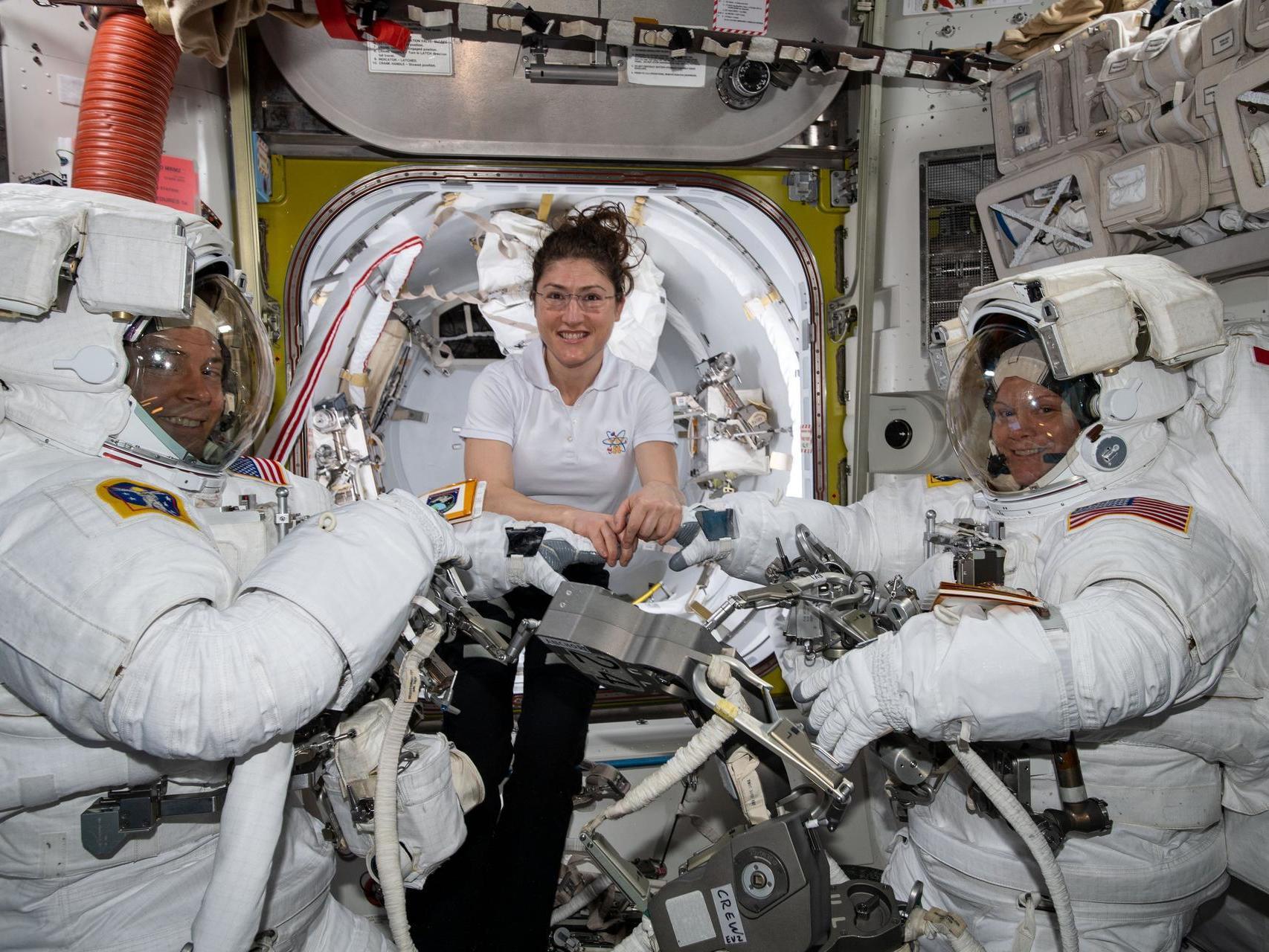Nasa’s incompetence has scuppered the first all-female spacewalk – no surprise given its sexist history
Attitudes have come a long way since the first space missions, but the technology has not. Just like the suits, the spaceships we build are not ready for female astronauts either

Your support helps us to tell the story
From reproductive rights to climate change to Big Tech, The Independent is on the ground when the story is developing. Whether it's investigating the financials of Elon Musk's pro-Trump PAC or producing our latest documentary, 'The A Word', which shines a light on the American women fighting for reproductive rights, we know how important it is to parse out the facts from the messaging.
At such a critical moment in US history, we need reporters on the ground. Your donation allows us to keep sending journalists to speak to both sides of the story.
The Independent is trusted by Americans across the entire political spectrum. And unlike many other quality news outlets, we choose not to lock Americans out of our reporting and analysis with paywalls. We believe quality journalism should be available to everyone, paid for by those who can afford it.
Your support makes all the difference.Today Nasa postponed its first all-female spacewalk because they didn’t have the right spacesuits. While the headlines makes this situation sound almost laughable, what it highlights is a long-running problem regarding getting women into space.
This Friday, on 29 March, two astronauts were set to make history by becoming the first all-women crew to walk in space. Instead of Anne McClain and Christina Koch however, the spacewalk will be completed by Koch and another colleague, Nick Hague, instead. The landmark occasion has been scuppered.
The change of plan is partly due to the availability of spacesuits, or extra vehicular units (EVUs). Anne McClain, who has been onboard the space station for a few months now, did her first spacewalk last week. She wore a large-sized spacesuit but realised after her first walk that she would fit better in a medium. She had tried both on earth but spacesuits often fit differently on space.
The problem now is that her colleague Koch is wearing the only medium NASA had left and there are none for McClain to use. Nasa is supposed to refurbish its spacesuits every six years, or 25 spacewalks – whichever comes first – but the spare medium spacesuit for whatever reason hasn’t been.
So, instead of rushing the refurbishment, the crew decided to change who is going on the spacewalk to ensure their safety. Spacesuit malfunctions are incredibly serious and shouldn’t be taken lightly – there have been 27 significant spacesuit failures. Thankfully none have been fatal, but a few have had the potential to be.
Of course, getting the right equipment for space is challenging, and there’s always the risk that things will have to change last minute. McClain did not feel comfortable in her large suit, and it is of the utmost importance that suits fit snuggly in order for the astronauts to be able to perform their tasks safely and correctly. This decision was made with the best interests of all the crew on board, which is great. There can be no gambling with people’s safety in space.
It’s not the first time a female astronaut has worn the wrong sized suit. According to Mary Robinette Kowal, author of Fated Sky, a novel about a “lady astronaut” venturing to Mars, a scene in which her main character uses padding to get a spacesuit to fit her was based on a real-life event.
The root of the problem is this: the Nasa spacesuits are old, and were not made with women in mind.
In 1978, Nasa sent their first ever female astronaut into space – Sally Ride. In the same year, the spacesuits used aboard the International Space Station were built. The ones they are using today.
Originally to be used on the Space Shuttle for short periods of time, the spacesuits were expected to have a lifetime of 15 years. In 1993, this was extended so they could be used on the International Space Station (ISS). Out of the original 18 suits, there are 11 left. There are no plans to build new ones until at least 2024, the end of the ISS.
Originally the spacesuits came in sizes small, medium, large and extra-large. To save costs, the extra large and small were scrapped but due to demand from male astronauts, the extra-large were brought back. The small size was not brought back.
This should not be surprising. Space explorations have never been very accommodating to women.
For Sally Ride’s one-week trip, engineers designed her a make-up bag and asked whether 100 tampons would be enough for her. Needless to say, she didn’t take the make-up bag, or anywhere as near that many tampons. It costs around $20,000 to put 1kg into orbit, so these unnecessary items would have cost a hell of a lot of money.
Periods in space have long been a subject of concern, too. In 1964, researchers suggested a female astronaut on her period should not operate “complicated machines”, because of her hormones. Not to worry, the report concluded, because it was “doubtful that women will be in demand for space roles in the very near future”.
Attitudes have come a long way since then, but technology has not. Just like the suits, the spaceships we build are not ready for female astronauts either. In many systems, like on the ISS, the toilets are not built to deal with menstrual blood.
This was clearly more than an error on behalf of the astronaut, or of the organisation. Nasa’s gear is simply out-dated, designed for men, and is in dire need of an overhaul if we are ever to give more women the opportunity to explore space.
Join our commenting forum
Join thought-provoking conversations, follow other Independent readers and see their replies
Comments